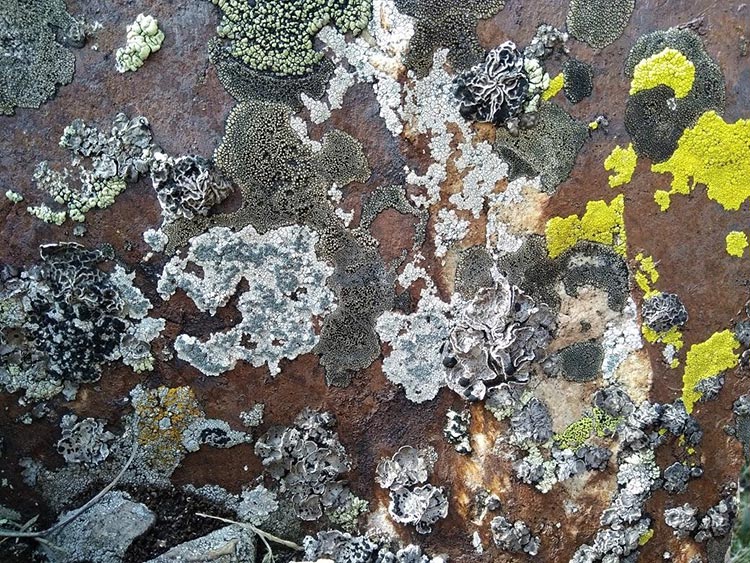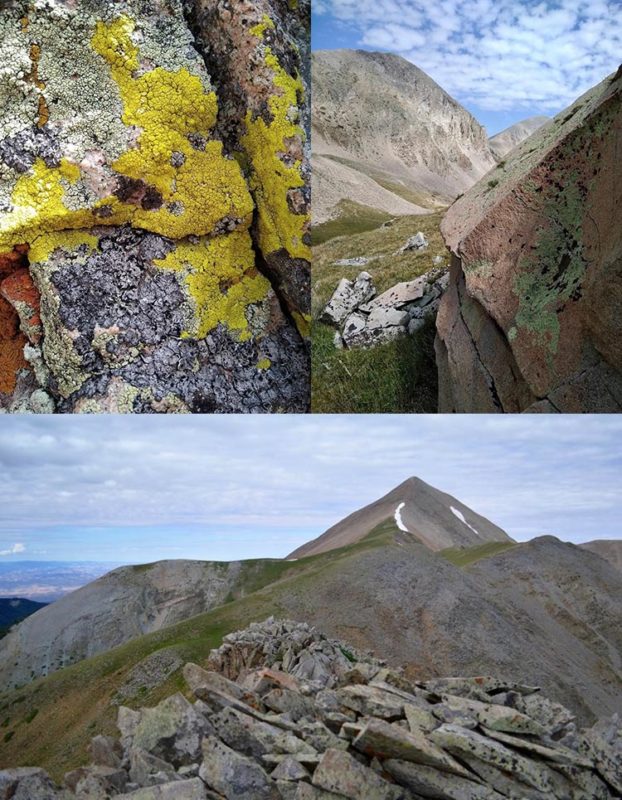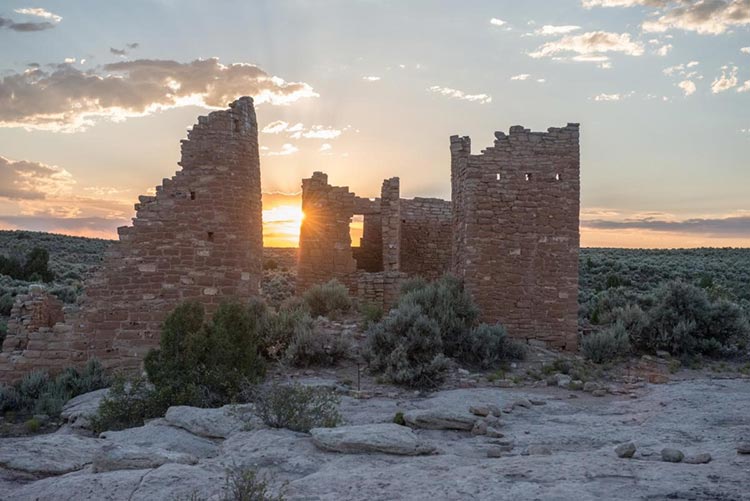
CNHA Discovery Pool Funds Lichen Study in the La Sal Mountains
Article and Photos by Dr. Steve Leavitt
As an isolated “sky island” surrounded on all sides by semiarid, low-elevation, canyon dissected terrain, the La Sal Mountains, southeast of Moab, are truly unique in the region. In fact, the high peaks and ridgelines above treeline support one of the few true alpine communities on the Colorado Plateau. With limited alpine habitat in the La Sals and isolation from other, more extensive alpine habitats, one might predict these extreme environments support only impoverished biological communities.
However, recent CNHA Discovery pool-funded research, led by Dr. Steve Leavitt (Brigham Young University, Provo, Utah), revealed that the La Sals harbor the most diverse alpine lichen community known to date from the southern Rocky Mountains, with up to 240 distinct species – more than the known number of plants. Strikingly, some of these lichens were previously known only from the high Arctic and Antarctica. These results highlight how lichens were able to successfully disperse, establish, and persist in the isolated alpine habitat on the Colorado Plateau. The steep-sloped ridgelines and conical, eroded peaks in the La Sals may have existed as nunataks (an isolated peak of rock projecting above a surface of inland ice or snow), allowing lichens to persist even throughout Pleistocene glacial cycles.
Contemporary or recent dispersal events likely also play roles in driving alpine lichen community structure on the Colorado Plateau. Climate change and other contemporary disturbances are now having cascading effects on vulnerable alpine ecosystems, including those in the La Sals. How the lichens in the La Sals will respond to climate change, disturbances from recently introduced mountain goats and other changes is yet to be known. The data generated for this study provide an important resource for subsequent research in the ecology and evolution of lichens alpine habitats, including DNA barcodes for lichens species occurring in the La Sal Mountains and vouchered collections representing potentially undescribed species.

Update on Hovenweep National Monument

Hovenweep’s campground, roads, trails, and restrooms are currently open. The visitor center and bookstore remain closed at this time.
Look for staff at tables outside the visitor center Thursday through Monday, 9:00 am – 12:00 pm and 2:00 pm – 4:00 pm (dependent on weather and staff availability), to answer questions and provide additional information about the area. Trail guides and park brochures can also be found at the start of the trail, alongside a large interpretive sign with more information about hiking in the park. A water bottle filling station is located in the breezeway near the bathrooms.
The campground currently has twenty-three spaces open on a first-come, first-served basis to help maintain a safe distance between spaces. Please pay at the self-serve kiosk as you enter the campground. Check the kiosk bulletin boards for other important information.
The health and safety of our visitors, employees, volunteers, and park partners continues to be our top priority. When visiting, please follow local health orders, Leave-No-Trace principles, avoid crowding and high-risk outdoor activities. Activities that may result in injury would also put emergency response teams in danger due to the necessity of close contact during a rescue or evacuation.
We will continue to monitor all park functions to ensure that visitors adhere to CDC guidance for mitigating risks associated with the transmission of COVID-19 and take any additional steps necessary to protect public health.
For more information, visit our website at www.nps.gov/hove. Updates about the NPS response to the coronavirus will be posted on www.nps.gov/coronavirus.
This is an excerpt from the Canyonlands Natural History Association’s Member Newsletter. To find out more about CNHA and how to get your own copy delivered, visit the Canyonlands Natural History Association website.
